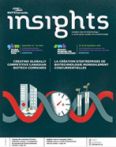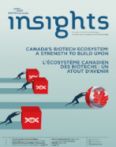Clinical Evaluation Reports for EU-Marketed Medical Devices – A Summary of the Regulatory Guidance
Following the June 2016 release of the new MEDDEV 2.7/1, revision 4 guidance (Rev 4), manufacturers of CE-marked medical devices are scrambling to maintain compliance. Clinical evaluation is necessary for the initial CE-marking of new devices, as well as for devices that have been marketed for years. Manufacturers are required to provide sufficient evidence to show conformity of the medical device to the Essential Requirements, and its performance and safety when used clinically according to the instructions for use. Clinical Evaluation Reports (CERs) must be created during device development and updated periodically throughout the marketed lifetime of the device in the EU. This summary outlines the major aspects of this regulatory requirement.
Rev 4 specifies the required steps to perform a robust clinical evaluation, which include; defining the scope of the evaluation, systematically identifying and analyzing the available clinical data, and reporting the results of the evaluation. The scope of the evaluation takes into consideration the disease state and progression, target user populations, current “state of the art” of the available treatment options, as well as the known benefits and risks of using the device, and any gaps in knowledge.
Clinical evaluation is based on data from clinical investigations or a literature review, although a combination of both data sources is commonly used in practice. During development of new medical devices, a gap analysis defines what data is needed to demonstrate conformity, and any necessary clinical investigations should be incorporated into the overall development plan. For currently-marketed devices, any clinical data obtained during development as well as post-market surveillance data can be used. The safety and performance of a predicate device from the same manufacturer may be used in the clinical evaluation, if there is sufficient data to declare equivalence between devices. Access to design history files is necessary to meet the technical, biological and clinical criteria of Rev 4 to determine equivalence. Thus, it is near impossible to use safety and performance data from a competitor device for clinical evaluation (unless equivalence can be shown).
Data from the published literature are often used to support the clinical evaluation. A comprehensive literature search is performed in multiple databases using a pre-specified search protocol. For inclusion in the clinical evaluation, the relevance of each identified citation is assessed using pre-defined criteria. These two steps are documented in detail to ensure that the results are reproducible. Data from each relevant citation and clinical investigation is critically evaluated for scientific quality and validity, according to pre-specified criteria such as study design, patient population, clinical or surrogate endpoints, and interpretation of the results. Randomized, controlled clinical trials are given a heavier weight in the clinical evaluation than review articles or case reports. Other data sources used in the clinical evaluation include pre-clinical bench data (design verification and validation), incident reports sent to the manufacturer, and post-market surveillance. Irrespective of source, all identified data are subject to the same level of scrutiny in the clinical evaluation.
The findings from all data sources are presented in the final CER, and based on the findings, conclusions are made regarding the performance and safety of the device and its conformance to the Essential Requirements. Any residual risks and gaps in knowledge are identified and considered to be acceptable (or not) in relation to the overall benefit-risk ratio and disease state. Given the complexity of developing a clinical evaluation process and extent of the final CER, close collaboration between device development engineers and clinical teams is essential.
Given the complexity of developing a clinical evaluation process and extent of the final CER, close collaboration between device development engineers and clinical teams is essential.
Dr. Mayme Wong
People qualified to perform the clinical evaluation must be knowledgeable about the device technology and disease state, with a relevant degree and/or professional experience. Fortunately, periodic updates of the CER are far less painful than the initial process development and writing of the first report. The CER and manufacturer’s process for clinical evaluation may be scrutinized by a Notified Body during a site audit. Additional details are specified in the guidance document (https://www.document-center.com/standards/show/MEDDEV%202.7.1).



